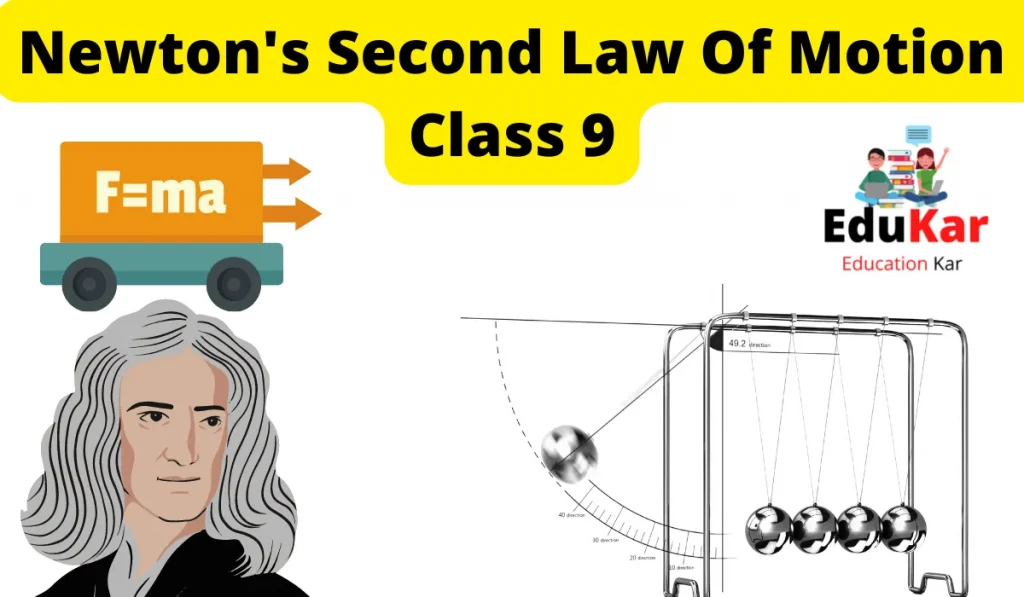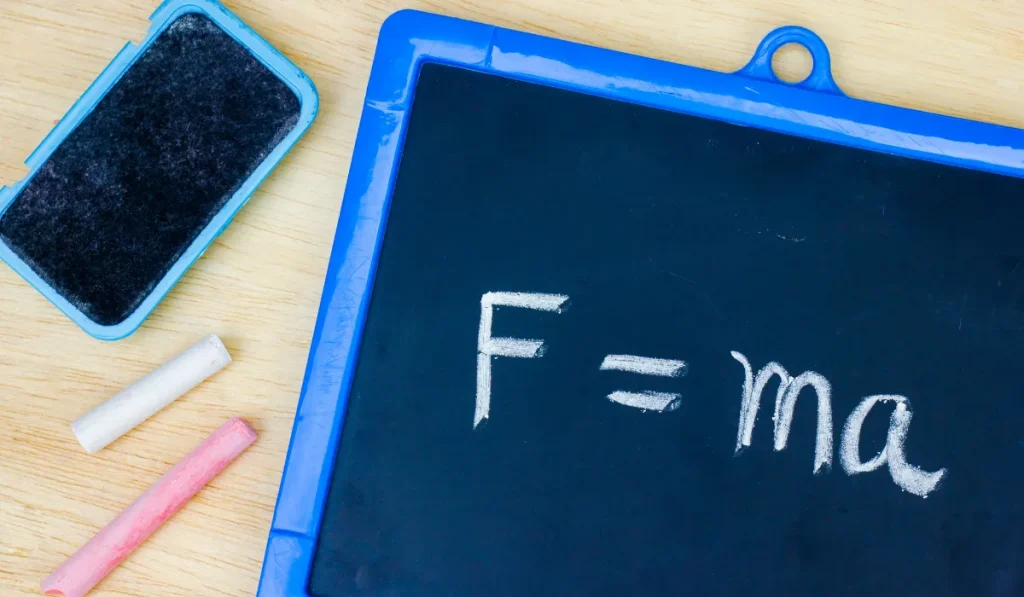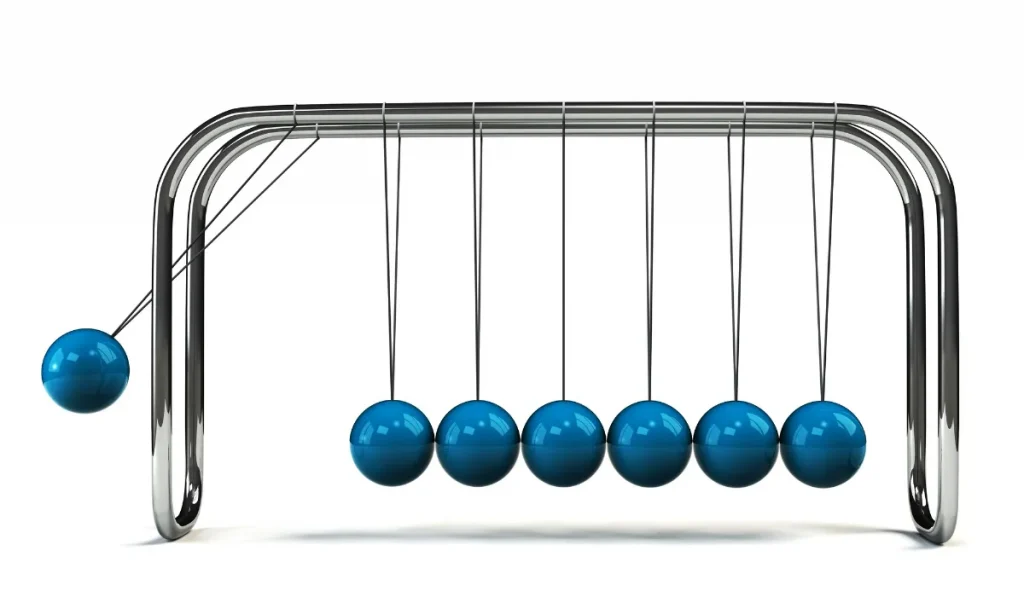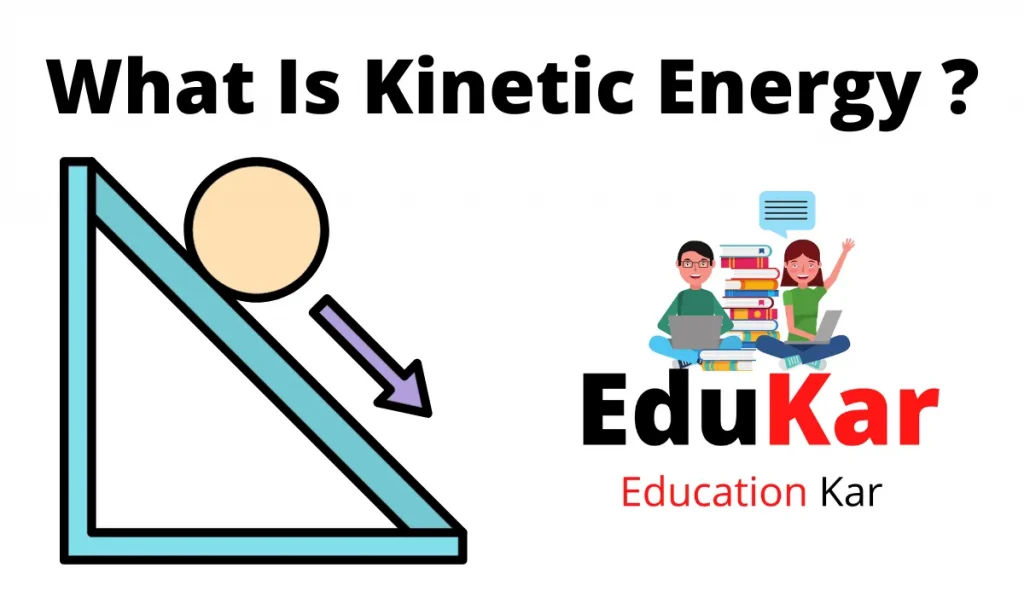Contents

Introduction Of Newton’s Second Law Of Motion
Newton’s second law of motion is interconnected with the first law of motion. It gives the significant definition of force. Mathematically, it describes the causes and consequence of force and changes in the motion of an object. Before knowing the equation of Newton’s second law of motion which deals with the mass, force and acceleration of an object, let’s have a look at the 3 laws of motion.
Well, it’s a usual fact that the students are most familiar with Newton’s law of motion, how an apple fell from the tree and resulted in a greatest discovery in the history of mankind. Thanks to Sir Issac Newton for that as it has been of use for years now and has helped out in the evolution of many new innovations. Moving forward the students are taught these idea to make them familiar with the conception and make their way easier for further studies.
The students are provided with all the associated study material and resources on edukar.in website for free. The study material is accessible for classes 1 to 12 in the form of notes, worksheets, revision notes, sample papers, NCERT Solutions and additional material for the students to make use of them while preparing for the exam and to clear their conception and doubts well with ease.
The “Three Laws of Motion”
Newton’s First law: It is also known as the “law of inertia”.
The sentence state that, “If a object is in the state of total relax or in uninterrupted motion it will follow to remain in addition, if it is acted upon by a external force.”
Newton’s Second law: The sentence depicts, “the rate of change of momentum of a body is directly equivalent to the external force applied to the body. Moreover, the momentum of the body happens to be in the trajectory where the force is exerted.”
Newton’s Third law: The sentence depicts, “no matter what is the activity, according to this occurrence, always an equal and opposite reaction abides for it”.
Newton’s 2nd Law Statement
Newton’s first law sentence, “unless a object is acted by a foreign force, it abides in its state of relax or of uniform motion.” So, the question appears, what happens to your object when an external force is applied to it? This answer is given by Newton’s second law of motion.
According to Newton’s 2nd law of motion, force acting on a object is equal to the rate of change of momentum. For a object with a constant mass ‘m’, force is given as,
F = ma
Where,
a = acceleration produced in the object.

The above equation state that, if the force is two times the acceleration also gets doubled, and if mass is two times acceleration becomes half.
Velocity and Acceleration
Newton’s second law of motion states that, when a force is exerted to an body, it produces acceleration in the body ( i.e. rate of change of velocity). For an body at rest, the applied force generates acceleration in the body and makes the body move in the direction of applied force.
For an body which is already in motion, the direction of the exerted force matters to determine its state. If external force is exerted in the direction in which the body is moving, the acceleration of the body increases. If external force is applied in the direction opposite to the motion of the body, the acceleration of the body decreases and finally comes to stop.
Force and acceleration both are vector quantities, i.e. they have the two of magnitude and direction. Multiple forces can also act in a object at a time.
Hence, ΣΣF = ma
Where, ΣΣ= vector sum of all the forces acting on a object.
For ‘Changing the Mass’
For this let’s presume that we have a car at a point (0) which is defined by the location X0 and time t0. The car has a mass of m0 and moves with a velocity of v0. Here, after being put through to a force ‘F’, the car starts to travel to point 1 defined by location X1 and the time by t1. The mass and the velocity of the car changes during the travel to values m1 and v1 corresponding. Thus, Newton’s second law helps to decide the new values of m1 and v1 if we already know the value of the acting force.

From the differentiation of point 1 and point 0, an equation for the constrain acting on the car is formed as follows:
F= m1v1−m0 v0t1−t0
F= m1v1−m0 v0t1−t0
Now, let’s presume the mass to be constant here. This supposition is helpful for a car as the only change in the mass would be the fuel burned while travelling between point “1” and point “0”. Here, the weight of the fuel is probably very low in comparison to the rest of the car, mostly looking at the small changes in time. Meanwhile, if we consider the flight of a bottle rocket, then the mass does not remain same here, and only the changes in momentum can be seen here.
For ‘Steady Mass’
For a steady mass ‘Newton’s second law’ can be equated as follows:
F= mv1−v0 t1−t0
F= mv1−v0 t1−t0
As we know, acceleration is specified as the change in velocity which is divided by the change in time.
The second law then lessen to a more common form as follows:
F= ma
The upper equation conveys to us that an body will accelerate if it is subjected to an external force. While the amount of force is directly equal to the acceleration & inversely proportional to the body mass.
Implementation of Newton’s Second Law of Motion
Some uses of Newton’s second law of motion are mentioned below:
- Kicking a Ball
When we kick a ball we put some force in it, in a specific angle. The ball moves in that direction. If the applied force is high the distance covered by the ball will also be high, and if the applied force is low the distance covered by the ball will also be lower.
- Two People Walking
If two people of dissimilar masses work together, the one with the heavy mass will walk slower in comparison to the one with the lighter mass. This is because more acceleration is generated by the lightweight person.
- Pushing a Cart
Pushing an empty card is easy in comparison to pushing a loaded cart, this is because if the mass of an body is more, a huge amount of force will be needed to move it.
2nd Law of Motion Examples
Some Newton’s second law of motion examples are:
- Pushing or pulling an empty cart is easy in comparison to a loaded cart because the loaded cart has more mass.
- Stopping a moving ball needs force.
- When a ball fall on the ground, it apply a downward force on the ground, and in reaction to it the ground apply an equal upward force on the ball, thus makes it bounce.
- If the equal amount of force is applied to move a car and a bike, the acceleration of the bike will be high because it has less mass than the car.
Q1: Why is Newton’s 2nd law important?
Ans: Without this law, we would not be able to understand how objects move in the world around us. The law states that the acceleration of an object is directly proportional to the force applied to it. That means if you want to change the speed of an object, you need to apply a force in the opposite direction of its velocity. However, the law does not apply if the objects are moving at constant speed.
Q2: What are examples of Newton’s 2nd law?
Ans: An example of Newton’s 2nd law is ball hitting. If you swing a bat and hit a ball with it, the ball will move in the direction you hit it. If you swing the bat, then take a step back, the distance you take back will be the same distance the ball moves in the opposite direction. This happens because the ball moves in the direction that you hit it.




![Packing Class 9 Questions and Answers [Class 9 English Beehive Chapter 7 ] Packing Class 9 Questions and Answers [Class 9 English Beehive Chapter 7 ]](https://edukar.org/wp-content/uploads/2023/01/Packing-Class-9-Questions-and-Answers-1024x640.webp)
![Digital Documentation Class 9 [Questions Answers & MCQ] Digital Documentation Class 9](https://edukar.org/wp-content/uploads/2022/08/Digital-Documentation-Class-9-1024x597.webp)

![What is Sublimation with Examples? [Class 9,10th,11th] What is Sublimation with Examples](https://edukar.org/wp-content/uploads/2023/03/What-is-Sublimation-with-Examples.webp)



![Natural Vegetation and Wildlife Class 9 Questions Answers [Class 9 Geography Chapter 5] Natural Vegetation and Wildlife Questions Answers](https://edukar.org/wp-content/uploads/2023/01/Natural-Vegetation-and-Wildlife-Questions-Answers--1024x640.webp)
![Weathering The Storm In Ersama Summary [CBSE Class 9] by Harsh Mander Weathering The Storm In Ersama Summary](https://edukar.org/wp-content/uploads/2022/10/Weathering-The-Storm-In-Ersama-Summary-1024x536.webp)
![A House Is Not A Home Question Answer [Class 9 English Moments Chapter 8] A House Is Not A Home Question Answer](https://edukar.org/wp-content/uploads/2023/01/A-House-Is-Not-A-Home-Question-Answer-1024x640.webp)
![In The Kingdom Of Fools Summary [CBSE Class 9] By A.K. Ramanujan In The Kingdom Of Fools Summary](https://edukar.org/wp-content/uploads/2022/10/In-The-Kingdom-Of-Fools-Summary-1024x536.webp)
